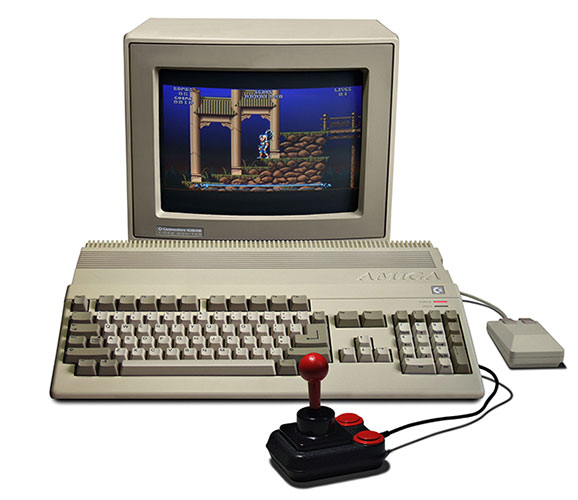

For those of you who haven’t spent the last two years waiting for this day, this post is going to sound a little crazy. For everybody else: praise the lord, Oculus VR has finally announced a release window for the consumer Oculus Rift.
According to a blog post that went up this morning,
“Since the earliest days of the Oculus Kickstarter, the Rift has been shaped by gamers, backers, developers, and enthusiasts around the world. Today, we’re incredibly excited to announce that the Oculus Rift will be shipping to consumers in Q1 2016, with pre-orders later this year.”
This is fantastic news for VR fans and developers, who have been waiting for news about the release since the first dev kit shipped in late 2012. Like “Half Life 3,” the Oculus Rift release date has become something of a running joke in PC gaming circles. Now we know, and a few other juicy details have come out as well.
First off, we have some new renders of the consumer release of the headset. The base hardware looks very much like a streamlined version of the Crescent Bay prototype that I tried back at CES. You can see my demo experience in the video below.
This is a good thing. The headset I tried at CES was shockingly light and comfortable on the head, if a little fragile. The final look of the hardware is a good deal cleaner than the prototype — a bunch of seams and tracking dots have been hidden away beneath matte black plastic which almost resembles cloth. Aside from that, very little has changed — surprising, given Oculus’ acquisition of Carbon3D, the design group responsible for the Xbox 360 controller.
The result doesn’t look bad, as you can see below, but the final design is also not what you normally expect from PC gaming hardware. The RAT 7 gaming mouse looks like a weaponized armadillo. The Rift CV1 is far less ostentatious. According to Oculus founder Palmer Lucky, this reflects a design focus on function over form.
“The goal is to impress people with content, not a crazy tacticool design like most PC gaming hardware. The Rift should be effectively transparent to consumers, a conduit for games, so the top priority is making it comfortable, lightweight, and functional. It is also 100% sexy.”
Here’s a shot of the hardware from the bottom, showing the new rigid straps, and tantalizing VR magic leaking from the lenses.

Here it is from the front, showing a clean front face (notably lacking either the Oculus logo or the word “Rift”). You can see the integrated headphones below the device.

We now have confirmation that both speakers and a microphone will be present in the Rift, which is important for social VR experiences. The speakers appear to be open-backed, reflecting the promised high quality of the 3D audio hardware. There are also some subtleties here:

Most notably, the lenses now appear to be part of an integrated assembly — there are no replaceable cups for vision correction. Hopefully, that means that the Rift consumer version has a focus adjuster wheel on top, like the GearVR. This is consistent with the seam running around the device that seems to separate the screen housing from the optics. On the plus side, no more dust on the screen!
On a lower-tech note, the foam seems to be different: it’s covered in a textured plastic finish, instead of the cheap felt used on the DK2. This will probably help with sweating / hygiene issues. It also goes all the way down to the roomy nose relief. That’s welcome news for me and my plus-sized schnoz, which tends to get sore after an hour or two in the DK2.
Finally, there’s the question of what the hell this thing is:

It’s clearly a toggle switch or slider of some kind, and it’s pretty prominently displayed on the device. Is this focus? Power? Volume? Brightness? Seriously, what is that?
There’s no word on pricing yet, but the dev kits so far have been in the $300-$400 range, and FB may choose to subsidize that further. The larger cost is going to be in purchasing the high-end gaming machine needed to run this thing.
There are still major open questions about the consumer version of the Rift. Their leading competitor, Valve and HTC’s Vive headset, supports room-scale head tracking and tracked controller wands. It’s not clear whether Oculus can match either of these crucial features.
As far as tracking goes, the prototype that I tried at CES could handle about a six foot by six foot play space, and Palmer Lucky has confirmed that the tracking in the consumer version will be better than that. The big question is — how much better?
Larger play spaces have major gameplay implications, and should be considered a crucial feature. The blog post does note that the hardware will support “both seated and standing experiences,” which is a major shift in messaging, and one that could signal that room-scale tracking is in the cards.
As far as input goes, Oculus has been extremely tight-lipped, quipping ‘input is hard‘ and talking about the dangers of overpromising when developing new hardware. In an interview at TechCrunch Disrupt this morning, Nate Mitchell, the VP of Product at Oculus, talked a little about what the company has in mind.
“We have a diverse approach to input. […] we have a couple of different things we are excited to share in the near future.”
This seems to imply that Oculus will offer several input devices, which is a very flexible strategy, but does risk market fragmentation. Meanwhile, Palmer Luckey has mentioned that input is his pet project. The topic also made the list of near-future reveals in the Oculus blog update.
“In the weeks ahead, we’ll be revealing the details around hardware, software, input, and many of our unannounced made-for-VR games and experiences coming to the Rift. Next week, we’ll share more of the technical specifications here on the Oculus blog.”
Clearly, the company has something planned for its core input device, but exactly what that is is anyone’s guess. Are they going with controller wands, like the HTC Vive? Or tracked gloves? LEAP-style optical tracking? Or are they falling back to something like a gamepad? The answer to this question could decide the outcome of the VR hardware war. Personally, I’m on the edge of my seat.
How about you? Will you be buying a Rift next spring? Waiting to hear about the input? Let us know in the comments, and stay tuned. We’ll be covering new revelations at they happen in the run-up to E3.




 25 Awesomely Bad Gaming Magazine Covers From the 90s
25 Awesomely Bad Gaming Magazine Covers From the 90s Relive Classic Amiga Pinball With Pinball Dreams & Fantasies for iOS
Relive Classic Amiga Pinball With Pinball Dreams & Fantasies for iOS Destiny Guide: How to Wreck with the Titan Class
Destiny Guide: How to Wreck with the Titan Class How To Fix Far Cry 4 PC Black Screen, Black Shadows, Blue Screen and Restart issue, Shuttering and sound Issue and more
How To Fix Far Cry 4 PC Black Screen, Black Shadows, Blue Screen and Restart issue, Shuttering and sound Issue and more Assassin’s Creed 3 – Combat Item Guide
Assassin’s Creed 3 – Combat Item Guide